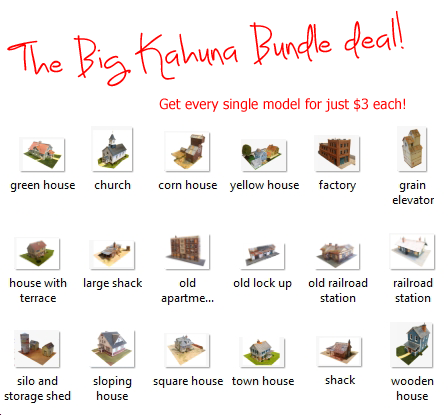John’s been in touch with his HO scale haunted house. It’s always a joy when I see his name in my inbox:
“Hi Al,
There may be a few universal truths in what’s required when building a model railroad layout, tracks, trains, and train stuff.
I have another one – every layout needs a haunted house. I added mine now as Halloween approaches (my birthday by the way) and finally got around to getting my haunted mansion in place.
It’s the old recluse Bartholomew Polesitter place, known locally as “Polesitter Peak” never sold after the old man died.
Potential buyers the real estate people took up there who wanted the place would leave after 10 minutes in it. They universally claimed cold hands were brushing their neck, or other body parts, always after they entered the study where ‘ol Bart’s carcass had been discovered by the three teenagers who went to the place on a dare.
Finally, the real estate people stopped trying to sell the place. It can still be purchased for $286.00 in back taxes.
It all started when one high school jock, a nerd, and a beauty queen in high-heels took the dare to explore the decaying mansion. And yes, upon entering, they decided to split up and explore – the high-heels finding the mummified remains. She, screaming so loud at finding Bart that a few hundred bats woke up in the top floor attic and chased the jock down the stairs. The high heels, on que, twisted an ankle.
The nerd waited for the bats to settle down and rescued the beauty queen, with he and she limping back to the jocks car where he had locked himself in, refusing to open the doors until sunrise, some 4 hours away. His jock title forever revoked once the Craig Mountain High School classmates heard the story.
Other than the twisted ankle, the only other injury was the embarrassing jock’s case of poison ivy so bad that the fuzzy seat-covers in the jocks car had to be trashed. The local sheriff, called after an attack of conscience by the nerd, found no foul play, and no relatives could be found. The nerd permanently replaced the jock as the boyfriend of the beauty queen in high heels.
Ok, this HO scale haunted house model is from Gold Rush Bay Goldrushbay and took a number of hours to paint, age, then partially destroy. This company sells 3-d printed models, completely ready to paint.
Finding a place to put the model was a challenge, finally ending up with the space over my pull-out work bench/shelf, which resides below the tracks which are below the new portion of mountain where the mansion ended up.
I cantilevered some braces to hold my typical screen wire hardshell up and away from the tracks. For interest I thought a few stone walls would add some detail and give a logical reason for terracing the scene.
The pictures follow the construction.
Regards, and again thanks Al for all you do for our hobby!
John”
A huge big thanks to John for sharing his HO scale haunted house – I absolutely loved it! It reminded me of Dan’s: Halloween model train.
If you want to see more of John’s stuff, his last post on his new layout is here:
John’s HO scale coal mine layout.
That’s all for today folks.
Please do keep ’em coming.
And if today is the day you get started on your layout, the Beginner’s Guide is here.
Best
Al
PS Latest ebay cheat sheet is here.
PPS More HO scale train layouts here if that’s your thing.





























